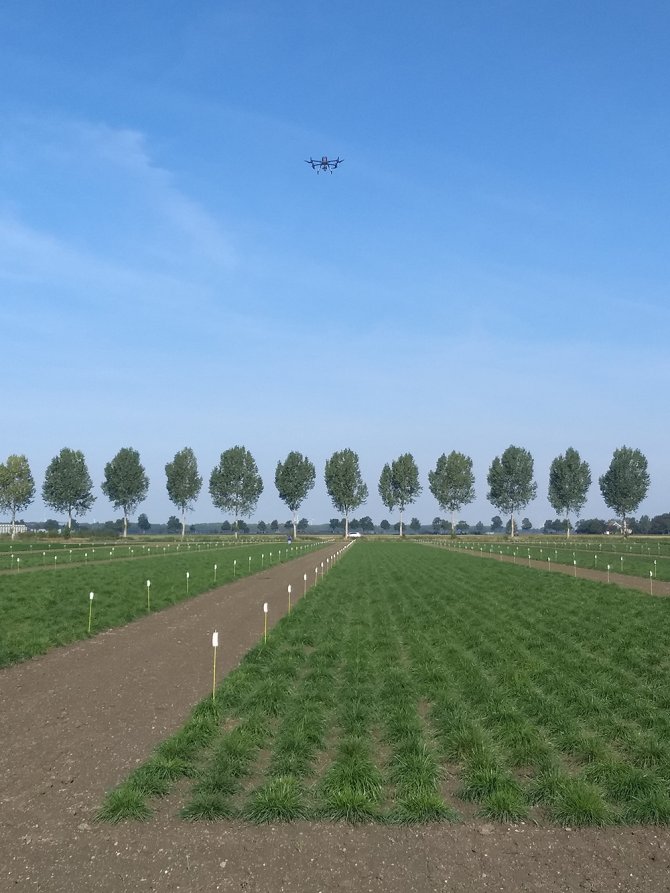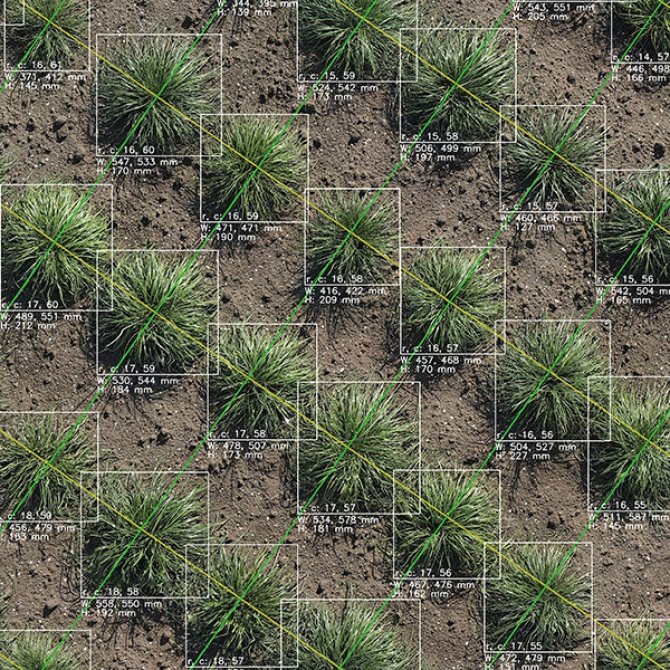
News
Drone rapidly characterizes new types of grass
Breeders who have developed a new variety must have it checked before market introduction. This is done by organizations such as Naktuinbouw. The crop experts look at dozens of properties of the crop. That is very labour-intensive. The Greenhouse Horticulture and Flower Bulbs Business Unit of Wageningen University & Research is investigating whether part of the monitoring of perennial ryegrass can be done by drones.
Perennial ryegrass is a common crop for lawns and forage in pastures. There are about 1,200 varieties of the crop, with dozens more added each year. These new varieties must be checked before market introduction by an independent body, such as in the Netherlands by Naktuinbouw.
In addition, new varieties are checked for distinction from existing varieties, uniformity within different grass clumps, and stability over multiple reproductive cycles. To determine these properties, all varieties are scored on 22 characteristics, including the size and height of a clump of grass, the length and width of the flag leaf, flowering date, and various characteristics of the stems..
Demand for advanced technology
For the measurements of some of these characteristics, crop experts go into the field, armed with a tablet and a digital yardstick. Although individual measurements don’t take much time, there are many measurements to be taken each season. For one, measurements for one variety need to be repeated on 60 different tufts of grass. Moreover, there are several hundred reference varieties: these must also be checked by the crop experts. All in all, there are many tens of thousands of observations every year, for perennial ryegrass alone. This whole process means that the workload is heavy and repetitive, making it is increasingly difficult to find new people that also have the right skills and expertise.
Four years ago, the European project INnovations in plant Variety Testing in Europe (INVITE) started. The aim of this five-year project is to promote the introduction of new varieties that are better adapted to changing biotic and abiotic conditions and to more sustainable crop management practices. WUR is involved in the work package that focuses on using technology to improve breeding.

WUR research
Research by WUR at Naktuinbouw shows that it is possible to determine the size and height of a tuft of grass by means of a drone and artificial intelligence. To make this possible, the drone flies over the crop with a high-resolution camera at a height of only 6 meters. By taking overlapping photos, an entire test field can be combined into one large mosaic, with an associated elevation map. In this way, thousands of size and height measurements can be performed per hour with just a few pushes of a button.

In addition, WUR is investigating whether it is possible to monitor the start of the flowering period of the grasses. The difficulty is that the inflorescences are small, green and elongated. With a camera, the youngest inflorescences are therefore hardly distinguishable from the rest of the grass. However, when flying very low, inflorescences several days old can be detected.
The researchers are now looking at the possibility of detecting this 'older' inflorescence and then calculating back, partly on the basis of weather conditions, when the flowering started.